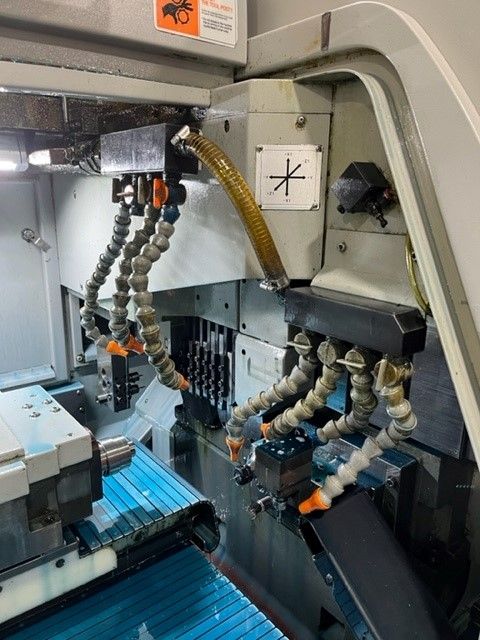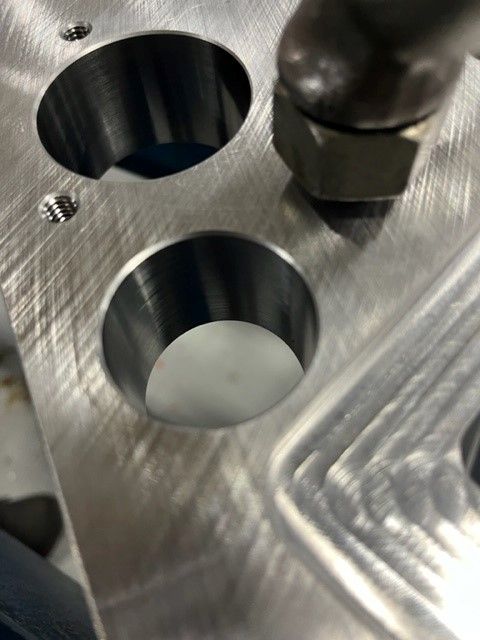“My son, for example, graduated from college with a biology degree and a teaching certificate. There wasn’t a single class on nanotechnology or any mention of the technology throughout his college career. It’s discussed more in the medical field, but there’s still a disconnect here,” English said.
These nanofluids can enhance the thermal conductivity and tribological characteristics in cutting tool applications by reducing friction, lowering tool wear and improving the surface quality of components including gears.
Tool-X has also proven to allow a lower chemical footprint, making it easier for manufacturers to conform to ISO 14001:2015 standards to keep plants clean and healthy for employees. Sustainability and green manufacturing are additional areas the United States tends to trail Europe and Asia.
Nanotechnology, in fact, is one of the key enabling technologies to play a significant role in sustainability in the coming years. It is supported by the United Nations’ Sustainable Development Goals in varying fields such as natural sciences, medicine, agriculture, communications and manufacturing.
“Tool-X doesn’t smell and it doesn’t create bacteria,” English added. “We use less additives than other products on the market because we don’t need all the additional chemicals.”
The EPA went after many of the chemicals used in machine shops in the 1990s. This continues today as new regulations overhaul rules governing thousands of chemical products for consumers, manufacturers and scientists alike.
“Chemists looking to blend new formulas and create new compounds are running out of options. How many tricks do they have left up their sleeves?” English asked.
Tool-X in the Field
For a better understanding of the benefits of this nanofluid, we examined two separate case studies — one for a manufacturing plant in Michigan currently using the product and the other from a hobbing operation at General Motors.
4M Aerospace Operation
4M Industries (Livonia, Michigan) is a precision machine shop serving a variety of industries including aerospace, automotive, medical and weaponry. Due to the critical nature of the components produced at 4M, reliability and consistency are vital to the success of the operation.
 4M Industries in Livonia, Michigan chose Tool-X for its cleaning attributes and low chemical footprint.
4M Industries in Livonia, Michigan chose Tool-X for its cleaning attributes and low chemical footprint.
“COVID was not a factor in slowing our workload down,” said Stuart Palm, production manager at 4M Industries. “In fact, we were busier at the height of the pandemic.”
Palm stated that the company does not have a sales team trying to find new customers. “We get pretty much all our new business from word of mouth. They come back because of the consistency of our products and our personnel.”
These products are maintained by consistently looking at different ways to improve production on the shop floor. Tim Adams, CNC machining specialist at 4M Industries, was the first person on staff to research the potential of Tool-X.
“I was very familiar with the technology because of Rain-X,” Adams said. “We read about Tool-X in a trade magazine and inquired about setting up some tests in our facility. The coolant that was being used prior to Tool-X was not meeting 4M’s quality requirements.”
Adams said the changeover to Tool-X was easy. “The biggest challenges were cleaning the machines completely prior to the switchover and training. Basically, the entire staff needed to learn how this process was different from past coolants used in our machines.”
Once Tool-X was implemented, the company saw immediate results.
4M was able to shave off about 40 percent of its cycle time using Tool-X. The company also saw a significant increase in its milling feeds. “The productivity gains were apparent right from the start,” Adams added.
He was also surprised at how clean the machines stayed after using Tool-X versus the previous products. “The chips don’t hang-up in the machines and there’s no wax buildup. The nanofluid helps maintain machine cleanliness during operation which is a bonus,” Adams said.
4M is using the technology on its lathes, band saws and in the company’s tapping fluid. Adams said they’ve been able to keep the same saw blade in operation for over a year. They produce steel, aluminum and stainless-steel components for the aerospace industry using Tool-X.
As previously mentioned, the low chemical footprint and clean attributes of Tool-X are the reasons Adams believes other shop floors should consider implementation.
“We have a sister building across the street running the old coolant on the machines and the smell hits you when you walk in the door. There’s almost a constant vapor in the air. Our building is not like that at all,” Adams said.
Everything is more consistent now on the 4M machine floor. The tools last longer, the machines run faster and the air is cleaner. It looks nothing like the dirty, grimy, soot-filled manufacturing floors of the past.
General Motors Hobbing Operation
GM utilized Tool-X for a hobbing operation for the manufacture of ring gears. This production ran for three years and eight months. According to English, GM increased tool life from 867 parts per tool to 3,813 parts per tool during this timeframe. Scrap savings decreased by $3,072 per machine with productivity savings of $22,624 per machine. The consistency and predictability of the production lines during the testing period were more than enough to convince executives that the same machines and operations could be upgraded using Tool-X.
In a recent presentation for AGMA’s Emerging Technologies webinar series, English examined tool and coolant costs before and after GM utilized Tool-X. The production increase was noteworthy.
It’s All Chemistry and Mathematics
It’s a tough concept in manufacturing to suggest a product improves with longevity. Typically, machine tools need to be upgraded, tools resharpened and oils replaced. This — English reiterated — is where Tool-X can surprise customers.
He said that many issues occur in manufacturing because the oil changes month to month.
“One minute a machine shop is getting its oil overseas, then they run out and they’re buying from Alaska, then overseas again. These oils are never the same grades. So, you need an additive package to bring it up to application standards. And then you start the process all over again next month.”
Nanofluid — in contrast — performs better the longer it’s being used.
“In the GM case study, they couldn’t figure out how the numbers improved so much over time,” English said. “They thought we were adding something to the mixture. Truth is we set up a thirty-day test and it continued to improve over a period of three years. Greater production efficiency is a nice problem to have. Sometimes a technology comes along that challenges the status quo and suggests it’s time for a production process to change.”
This brings us back to the gear industry’s “if it ain’t broke, don’t fix it” mentality. It is changing. It’s safe to say that the next generation becoming executives appears open to trying new things and improving production processes. The leaders speaking up during webinars, trade shows and shop visits realize the importance of upgrading equipment to prepare for our tech-heavy manufacturing future. Tool-X is another example of a program that started out hush-hush in the government but can now offer significant benefits in gear manufacturing.
“The bang for your buck is actually greater in gear manufacturing than other areas,” English said. “Tool-X can provide an alternative to lubricants that are not meeting the demands of five-axis machining, carbide tooling, etc. It’s a technology that can benefit all the other new machining technologies that are being implemented in today’s machine shop.”
tool-x.net
Sidebar: Nanotechnology in Electric Vehicles
 Tool-X is a nanofluid that changes the characteristics of existing metalworking fluids by ‘manipulating’ speeds, feeds and metal removal rates using nanotechnology. The science behind Tool-X can potentially change metal cutting dynamics, improve surface finishes and extend tool life. The backstory of this technology is just as fascinating as its production results.
Tool-X is a nanofluid that changes the characteristics of existing metalworking fluids by ‘manipulating’ speeds, feeds and metal removal rates using nanotechnology. The science behind Tool-X can potentially change metal cutting dynamics, improve surface finishes and extend tool life. The backstory of this technology is just as fascinating as its production results.








